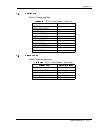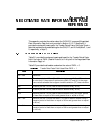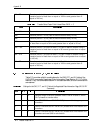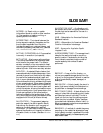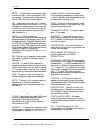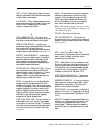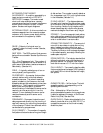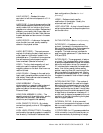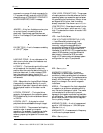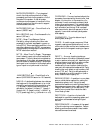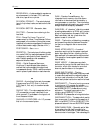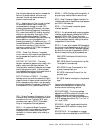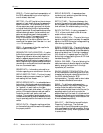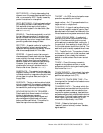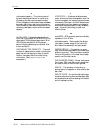
Glossary
Maxtor Atlas 10K III 18/36/73 GB Ultra160 SCSI G-5
HALF-HEIGHT – Standard drive size
equivalent to half the vertical space of a 5 1/4-
inch drive.
HARD DISK – A type of storage medium that
retains data as magnetic patterns on a rigid disk,
usually made of an iron oxide or alloy over a
magnesium or aluminum platter. Because hard
disks spin more rapidly than floppy disks, and
the head flies closer to the disk, hard disks can
transfer data faster and store more in the same
volume.
HARD ERROR – A data error that persists
when the disk is re-read, usually caused by
defects in the physical surface.
HARD-SECTORED – The most common
method of indicating the start of each sector on
a disk, based on information located in the
embedded servo. This method is more precise
than soft-sectored techniques and results in
lower overhead. (See also soft-sectored.)
HEAD – The tiny electromagnetic coil and
metal pole used to create and read back
magnetic patterns on the disk. Also known as
read/write head.
HEAD CRASH – Damage to the read/write
head, usually caused by sudden contact with the
disk surface. Head crash can also be caused by
dust and other particles.
HEAD ASSEMBLY – The tiny
electromagnetic or magneto-resistive element
used to write and read back the magnetic
patterns of data on the recording media. See also
Diamond Head.
HEAD DISK ASSEMBLY (HDA) – The
assembly made up of the spindle motor, spindle,
head positioner (actuator), head preamp
electronics, and magnetic disk assembly.
HIGH-CAPACITY DRIVE – By industry
conventions typically a drive of 100 megabytes
or more.
HIGH-LEVEL FORMATTING – Formatting
performed by the operating system to create the
root directory, file allocation tables and other
basic configurations. (See also
low-level
formatting
.)
HOME – Reference track used for
recalibration of the actuator. Usually the
outermost track (track 0).
HOST ADAPTER – A plug-in board that acts
as the interface between a computer system bus
and the disk drive.
INITIALIZATION – See low-level formatting.
INTERFACE – A hardware or software
protocol, (contained in the electronics of the
disk controller and disk drive) that manages the
exchange of data between the drive and
computer. The most common interfaces for
small computer systems are AT (also known as
IDE) and SCSI.
INTERLEAVE – The arrangement of sectors
on a track. The Interleave Factor is the number
of sectors that pass beneath the read/write heads
before the next sector arrives. For example, a
3:1 interleave factor means that the heads read a
sector, then let two pass by before reading
another, requiring three full revolutions of the
disk to access the complete data track. Maxtor
drives have an interleave factor of 1:1, allowing
the system to access a full track of data in a single
revolution.
INTERLEAVE FACTOR – The number of
sectors that pass beneath the read/write heads
before the next numbered sector arrives. When
the interleave factor is 3:1, a sector is read, two
pass by, and then the next is read. It would take
three revolutions of the disk to access a full track
of data. Maxtor drives have an interleave of 1:1,
so a full track of data can be accessed within one
revolution of the disk, thus offering the highest
data throughput possible.
INTERNAL DRIVE – A drive mounted
inside one of a computer’s drive bays, or a hard
disk on a card installed in one of the computer’s
expansion slots.
I/O PROCESS – An I/O process consists of an
initial connection (nexus) followed by zero or
more reconnections, all pertaining to a single



